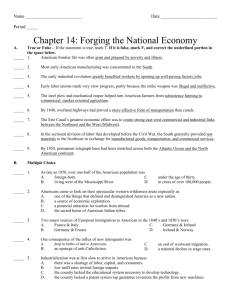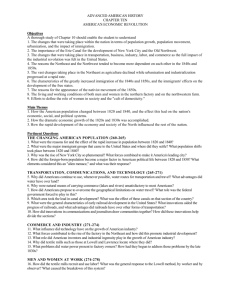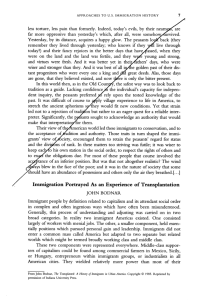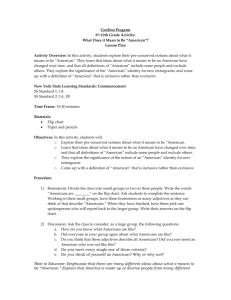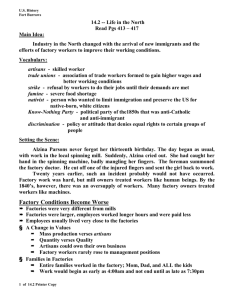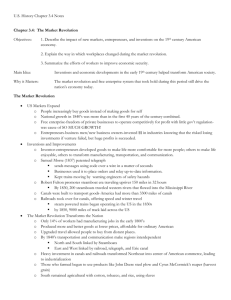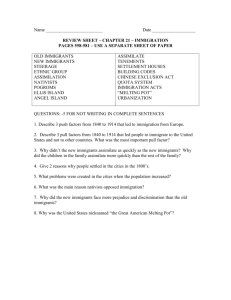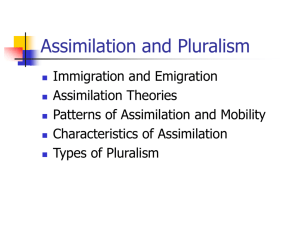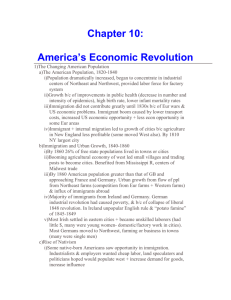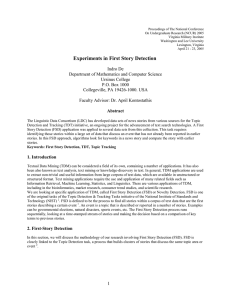America's Economic Revolution
advertisement
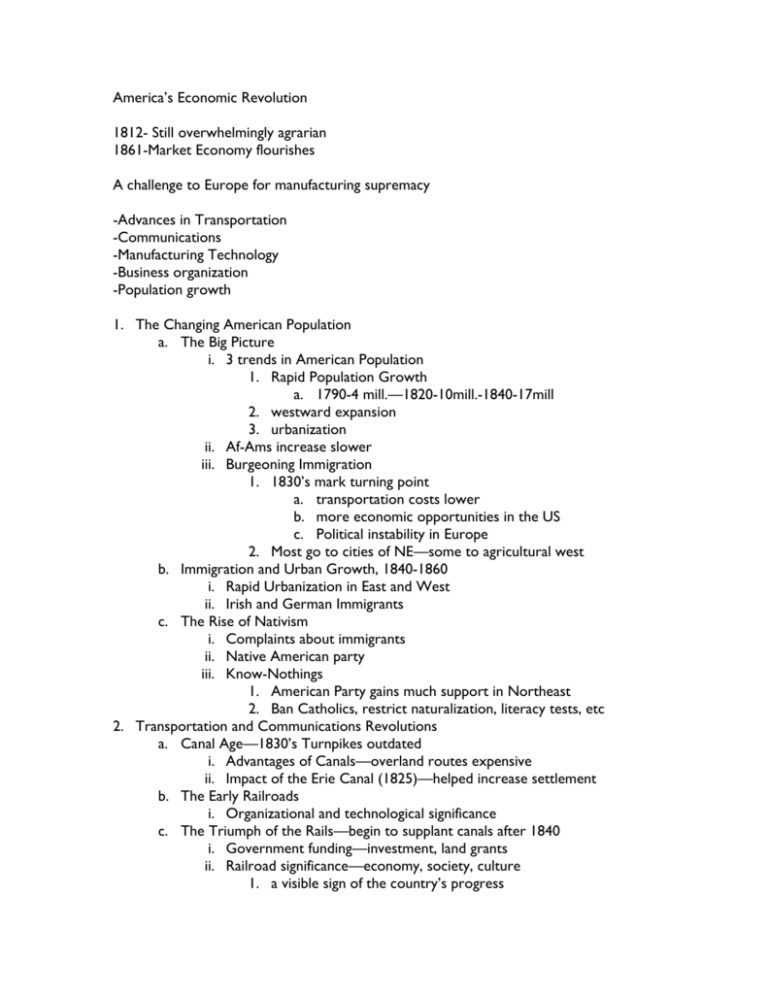
America’s Economic Revolution 1812- Still overwhelmingly agrarian 1861-Market Economy flourishes A challenge to Europe for manufacturing supremacy -Advances in Transportation -Communications -Manufacturing Technology -Business organization -Population growth 1. The Changing American Population a. The Big Picture i. 3 trends in American Population 1. Rapid Population Growth a. 1790-4 mill.—1820-10mill.-1840-17mill 2. westward expansion 3. urbanization ii. Af-Ams increase slower iii. Burgeoning Immigration 1. 1830’s mark turning point a. transportation costs lower b. more economic opportunities in the US c. Political instability in Europe 2. Most go to cities of NE—some to agricultural west b. Immigration and Urban Growth, 1840-1860 i. Rapid Urbanization in East and West ii. Irish and German Immigrants c. The Rise of Nativism i. Complaints about immigrants ii. Native American party iii. Know-Nothings 1. American Party gains much support in Northeast 2. Ban Catholics, restrict naturalization, literacy tests, etc 2. Transportation and Communications Revolutions a. Canal Age—1830’s Turnpikes outdated i. Advantages of Canals—overland routes expensive ii. Impact of the Erie Canal (1825)—helped increase settlement b. The Early Railroads i. Organizational and technological significance c. The Triumph of the Rails—begin to supplant canals after 1840 i. Government funding—investment, land grants ii. Railroad significance—economy, society, culture 1. a visible sign of the country’s progress d. The Telegraph i. Samuel Morse (1830’s) ii. Western Union—1860 NYC to SF, 1866 Transatlantic e. The new Journalism i. Associated Press (1846) ii. Mass circulation of newspapers 3. Commerce and Industry a. The Expansion of Business, 1820-1840 i. adv. Of Corporations—legal restrictions removed, limited liability b. The Emergence of the Factory system i. Dramatic growth between 1840-1860 ii. Northeast produces over 2/3 of manufactured goods c. Advances in Technology—(1840’s) i. Machine Tools—made parts—interchangeability ii. New Sources of Energy—Coal replaces wood and water power d. Innovations in Corporate Organization i. Rise of the Industrial Ruling Class 4. Men and Women at Work—1840’s immigrants replace natives a. Recruiting a native work force i. Lowell System—enlisted young women, decent existence ii. Factory Girls Association—union eventually fails 1. in response to lowering of standards (1830’s) b. The Immigrant Work Force i. Cheap immigrant Labor (1840s) ii. Labor conditions—factories dangerous, noisy, unsanitary, 12 hr c. The Factory system and the Artisan Tradition i. “Deskilling”—handmade goods replaced by manufactured goods d. Fighting for control i. Commonwealth v. Hunt 1842—Mass Supreme Ct favors unions ii. Labor resistance inhibited 1. flood of immigrant laborers 2. ethnic divisions pit worker against worker 3. strength of industrial capitalists—political social power 5. Patterns of Society—more unequal a. The Rich and the Poor i. Highly unequal wealth distribution 1. slaves, Indians, landless farmers, unskilled workers ii. Upper class emerges iii. Urban poor iv. Harsh Life for Free Blacks—many restrictions b. Social mobility i. Absence of class conflict 1. upward mobility? 2. Geographical mobility ii. Middle-Class Life 1. Rapidly expanding Middle Class a. Wealth in service—more liquid capital b. Household innovations—stoves iii. The Changing Family 1. Declining patriarchy—cities did not foster tradition 2. Public and Private Spheres—birth rate lowers iv. The “Cult of Domesticity” 1. Female culture develops—literature 2. Advantages and drawbacks a. Material comfort vs. detached from public world v. Leisure Activities—scarce at this time 1. Holidays 2. Rural vs. Urban 3. Vibrant Culture of Public Leisure a. Theatre 6. The Agricultural North—growth of commercial farming a. Northeastern Agriculture—decline and transformation to Northwest b. The Old Northwest i. Industrial growth in Old Northwest—Cleveland, Cincy, Chicago 1. mostly served agriculture ii. Rapid expansion of Farming—family farmer common 1. industrialization boosts agriculture—domestic market iii. Growing ties between NE and NW—increases isolation of South iv. New Agricultural techniques 1. seeds, breeds, plows, etc 2. McCormick Reaper—replaced manual labor 3. Thresher—separated grain from the wheat stalks c. Rural Life
